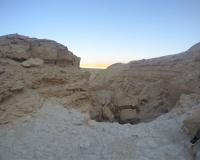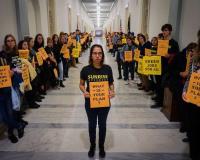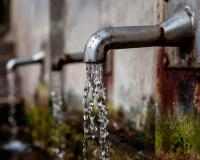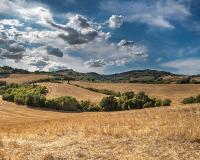
Vibrant Environment
Environmental Justice
All | Biodiversity | Climate Change and Sustainability | Environmental Justice | Governance and Rule of Law | Land Use and Natural Resources | Oceans and Coasts | Pollution Control

The global community of agencies and NGOs working in the field of environmental compliance and enforcement has grown substantially in recent years, yet many practitioners remain isolated from others working in the field.
As our understanding of the underlying drivers of environmental compliance and non-compliance deepens, a need arises for creative and unconventional collaboration tools. The recently released UN First Global Report on the Environmental Rule of Law examining the current status of environmental laws highlights...


As we get ready to ring in the New Year, the editors of Vibrant Environment thought it might be nice to take a look back at some of the work ELI did in 2018.
While environmental quality over the past 50 years has no doubt improved, the pace of change is leaving in the dust the linear environmental strategies of the past. We’re living in a fascinating moment in time when divergent forces—private environmental governance, law, technologies, and communities—are coming together, allowing us to harness their combined power in a new environmental paradigm. In A New Environmentalism: The Need for a Total Strategy for Environmental Protection, ELI offers a new way to think about the environmental strategies of tomorrow. The article was published in the September issue of ELR’s News & Analysis and was featured at the 2018 ELI-Miriam Hamilton Keare Policy Forum. We look forward to continuing the conversation in 2019.

“Our nation's food security depends on strong agricultural policy that provides stability for America's farmers and ranchers; protects our land and natural resources; develops new trade opportunities while leveling the playing field for our producers; strengthens rural communities; and helps Americans of all stripes access the nutritious foods they need to keep their families healthy. This is America's food policy. This is the Farm Bill.” (The House of Representatives Committee on Agriculture)

Close to 150 activists were arrested during peaceful protests organized by the youth-led organization Sunrise Movement on Monday, December 10. During and after the direct action, in which thousands of activists visited democratic offices demanding support for incoming Rep. Alexandria Ocasio-Cortez’s (D-N.Y.) proposal for a Select Committee on a Green New Deal, 10 additional democratic representatives pledged their support for the proposal. The resolution would create a committee that would have the specific mandate to draft a Green New Deal—the goals of which include 100% renewable energy, upgrading infrastructure, and green technology deployment — that would be ready by 2020. For “green” democrats, this is a difficult proposal to deny, especially given the depth of research on scaling green strategies, as exemplified by ELI Press’ latest release, Legal Pathways to Deep Decarbonization in the United States: Summary and Key Recommendations.

Continuing from ELI’s December 10 post on the legal authorization and applications of TEK in the United States, today, we explore incorporation of TEK into Canadian law.
Around the world, decisions impacting indigenous peoples’ traditional territories historically have been made without the participation, input, and consent of the indigenous communities themselves. Natural resource management relied solely on Western science, excluding rich knowledge gained over centuries of direct experience and practice.

Well before the world’s atmospheric level of carbon dioxide reached 400 ppm, residents and scientists in the Arctic were documenting dramatic changes taking place in the Arctic environment, which is warming at twice the rate as lower latitudes. The Arctic has seen loss and deterioration of summer and fall sea ice, melting of permafrost, migration of shrubby plants into the region, fires, and changes in the phenology of birds, animals, insects, and plants such that their seasonal cycles have become out of sync.

Lead exposure from drinking water is a deeply rooted regulatory, economic, and environmental justice problem in the United States. Tragic stories from Washington, D.C. in the early 2000s, Flint, Michigan in 2014, and most recently in Newark, New Jersey, expose on the national stage the most extreme cases of drinking water contamination. But it is also an everyday reality that falls disproportionately on many low-income and minority communities across the United States.

Solar panels, wildlife observatories, and rain barrels, oh my! How can the Environmental Law Institute’s Blight Revitalization Initiative for Green, Healthy Towns (BRIGHT) Area-Wide Planning Guide help your community implement green infrastructure? The BRIGHT guide compiles research on brownfields revitalization to empower communities and municipalities with some helpful tools to turn a brownfield into an economic opportunity. BRIGHT recognizes the economic and community-building potential that green infrastructure development can have for a community.

In the Alaskan Arctic, Inupiat hunt bearded seals for food and blubber—a tradition spanning generations, and based on hunters’ extensive knowledge of the weather, ice, seal habitats, and how to prepare and pay respects to the animal after killing it. But over the past few generations, their ability to harvest seals has been significantly affected with the warming oceans, melting ice, and changing patterns of marine animals in the Bering Sea. Last spring, hunters in Unalakleet, Alaska, could not participate in the harvest because there was little ice cover. Since seals use ice pans as a place to rest above water, reduced ice cover impedes hunters’ ability to find and hunt the animals. Inupiat worry about what these environmental changes will mean for future generations.